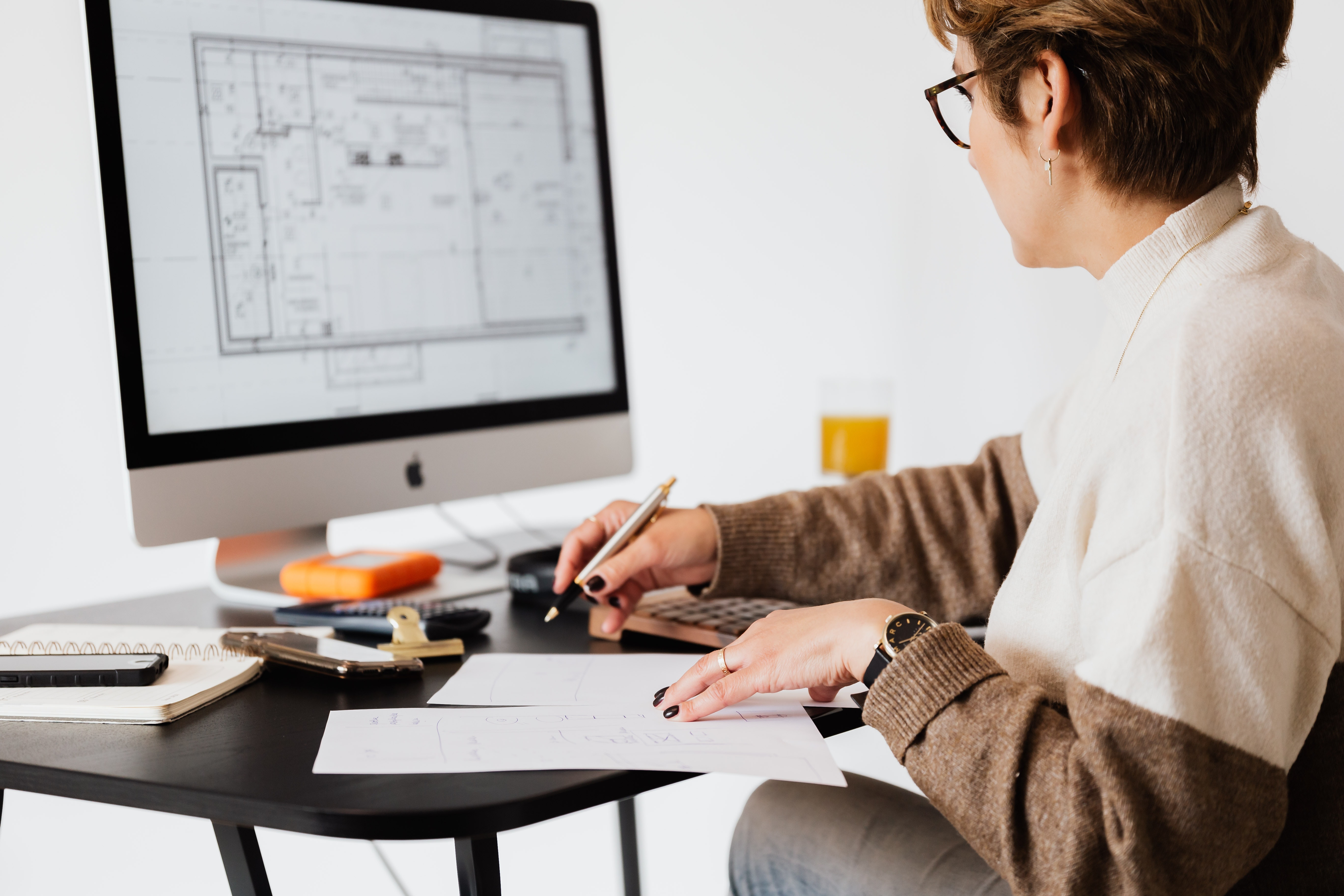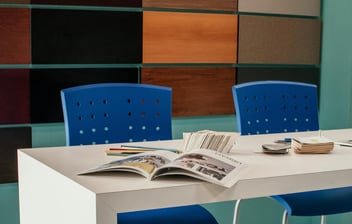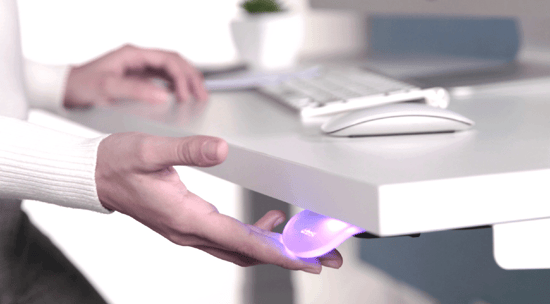Office Organization: how it impacts productivity 2025
The organization of your office space can either benefit or detriment productivity. Make sure you create a healthy environment with this information.
An organized office will always outperform an office in disarray or one that is not set up for efficiency; the better the organizational capacity, the better its productivity. Below are seven essential pointers, based on various studies, on how you can optimize your office’s operation and, consequently, improve its key performance metrics.
Organization of dedicated workspaces
Not only do 31% of office workers openly admit to suffering tremendous stress when they are unable to keep their workplace tidy, but this represents an average daily cost of £148, according to a study by Brother UK. When we can't have our work unit in top shape, in addition to spending more time looking for things, there is also a greater chance of misplacing many of them, which will inevitably result in low productivity. In this context, modular furniture with extendable capacity helps incorporate storage space into each workplace. Having cabinets or drawers where we can sort our work equipment and gear so that they are always within reach results in a more well-ordered workflow that contributes significantly to a cleaner environment and, therefore, more efficient. Suppose it is an executive function, which requires having a greater quantity of articles, documents, or written materials at hand. In that case, an executive set is an effective way to maintain a place in order and with enough space to develop comfortably and appropriately during the workdays.
Organization of the general office
In addition to objects and materials for personal use, other types of items, such as advanced tools or documents, are in everyday use among several office members. If your company handles a large amount of documentation, having a modern mobile filing cabinet will be an efficient alternative capable of saving space in your facilities. Similarly, installing cabinets, bookcases, or file cabinets in strategic locations will also allow you to keep a more orderly layout in the office, where each attachment has a defined place. Therefore clean and organized spaces can always be maintained, allowing you to make your work more productive.
Uncluttered conditions
In the interest of maintaining a better-organized space, it is also useful to make an assessment and consider what elements might already be unnecessary, even considering the capabilities of conventional technology. For example, migrating paper documentation to digital media can save a lot of space and allow for cleaner places. Moreover, in this new normal, the less contact you have with physical objects, the less risk of infection will be. Cables are another factor that can also generate more convoluted or elaborate work units; so seeking to reduce them as much as possible, or organize them in a more discreet way when it is impossible to eliminate them, will also contribute to generating a better work environment.

Digital Tools for Organization and Task Management
In today's fast-paced work environment, effective office organization extends beyond physical tidiness to encompass the digital realm. Digital tools for organization and task management have become indispensable, complementing physical efforts to create a truly efficient workspace.
Project management software like Asana, Trello, or Monday.com allows teams to track progress, assign tasks, and set deadlines, ensuring everyone is aligned and accountable. These platforms centralize communication and documentation, reducing the need for endless email chains and scattered files. Similarly, cloud-based document management systems such as Google Drive, Dropbox, or Microsoft SharePoint enable seamless collaboration, secure storage, and easy access to files from anywhere, at any time. This significantly reduces reliance on physical paper documents, minimizing clutter and improving accessibility.
You might be interested in: The ultimate guide to optimizing your time with Google Calendar
Automation tools further enhance digital organization by streamlining repetitive tasks. For instance, tools like Zapier or IFTTT can automate workflows between different applications, such as automatically saving email attachments to a specific folder or creating a task in a project management tool when a new email arrives.
Calendar management applications, note-taking apps (Evernote, OneNote), and communication platforms (Slack, Microsoft Teams) all contribute to a cohesive digital ecosystem that supports productivity. By leveraging these digital solutions, businesses can create a highly organized and efficient digital workspace that mirrors and enhances the physical one, allowing employees to focus on high-value tasks and reduce time spent on administrative overhead. This shift towards digital-first organization is crucial for maintaining competitiveness and agility in the modern business landscape.
PDF Editing Tools: In today’s dynamic work environments, handling and customizing digital documents is essential for smooth workflows and collaboration. One standout solution is the Canva PDF Editor, a visual tool that allows teams to edit, reorganize and personalize PDF files quickly—no paid software required.
Whether you're refining project reports, updating client proposals, or preparing internal presentations, Canva’s editor simplifies PDF workflows and reduces dependency on printed materials. This not only boosts team efficiency but also aligns with paperless office goals and sustainable practices.
Minimalism and Digital Detox in the Office
As the digital world increasingly permeates every aspect of our lives, the concepts of minimalism and digital detox are gaining traction in the office environment as strategies to combat information overload and enhance focus. Minimalism in the office encourages a deliberate reduction of physical and digital clutter, advocating for a workspace that is clean, functional, and free from unnecessary distractions. This means decluttering desks, organizing files (both physical and digital), and only keeping items that serve a clear purpose or bring joy. A minimalist approach can lead to a calmer environment, reducing visual noise and making it easier to concentrate on tasks at hand.
Complementing physical minimalism, a digital detox involves consciously reducing screen time and limiting engagement with digital devices and platforms. This doesn't necessarily mean disconnecting entirely, but rather setting boundaries and practicing mindful technology use. For example, scheduling specific times for checking emails or social media, turning off non-essential notifications, or utilizing
focus-enhancing apps that block distractions. The benefits of digital detox include improved concentration, reduced stress and anxiety, better sleep quality, and enhanced creativity. By consciously stepping away from constant digital stimulation, employees can reclaim their attention and engage more deeply with their work.
Implementing minimalism and digital detox strategies in the office can foster a culture of intentionality and well-being. It encourages employees to be more mindful of their consumption habits, both physical and digital, and to prioritize deep work over constant connectivity. This approach not only creates a more serene and productive work environment but also empowers individuals to manage their digital lives more effectively, leading to a healthier and more balanced professional life. The office of the future will likely embrace these principles, recognizing that less clutter and more focus can lead to greater innovation and employee satisfaction.
Collaboration without distraction
An office indeed enables greater collaboration and team integration. However, the fact that we can easily communicate with colleagues does not mean that we must be interconnected and attempt to solve everything collectively.
According to recent studies, when multiple tasks are performed simultaneously, productivity drops by 40%; therefore, it is also important to provide spaces that allow each person to stay focused and free of distractions while in the workplace. In this way, it is convenient to opt for modular systems with an excellent capacity to reduce the visual and auditory distractions generated inside an office. If tasks require collaborative work between two or more people, it is easy to prepare a separate space with the appropriate furniture for this type of teamwork face to face.
Greater flexibility
Currently, changes are also being continuously made, which is why the ability to adapt quickly and efficiently to the specific needs of the time is also a quality capable of improving productivity. Given this scenario, the modular units are efficient organizational alternatives with multiple advantages. They are straightforward to install, store, or adjust. With a series of simple steps, it is possible to add new work units, change the areas’ layout, or even equip them with accessories to meet the current moment’s needs. For example, if the distance between workstations has to be extended or the number of workers in the office reduced simultaneously, or if dividers have to be added to reduce the level of contact, it is effortless with a modular system; which can be adapted again when conditions allow it, and without having to make complicated and costly modifications.
Taking ergonomics into account
As part of this process of seeking a more organized office to improve productivity, it is also recommended to pay attention to the seating, as it is a crucial factor. The needs of a chair for visitors, who might only be in the office for a few minutes, are not the same as the needs of workers who might spend hours sitting down every day. The implementation of ergonomic chairs, suitable for each type of function, will help better take care of its staff’s health and enhance their performance.
A touch of nature
Finally, according to a study by the University of Exeter, it is shown that green space in the office helps to increase productivity by up to 15%. Although simple, a detail like this can revitalize an environment in unexpected ways, so it is worth considering a space for these elements within your organization.





